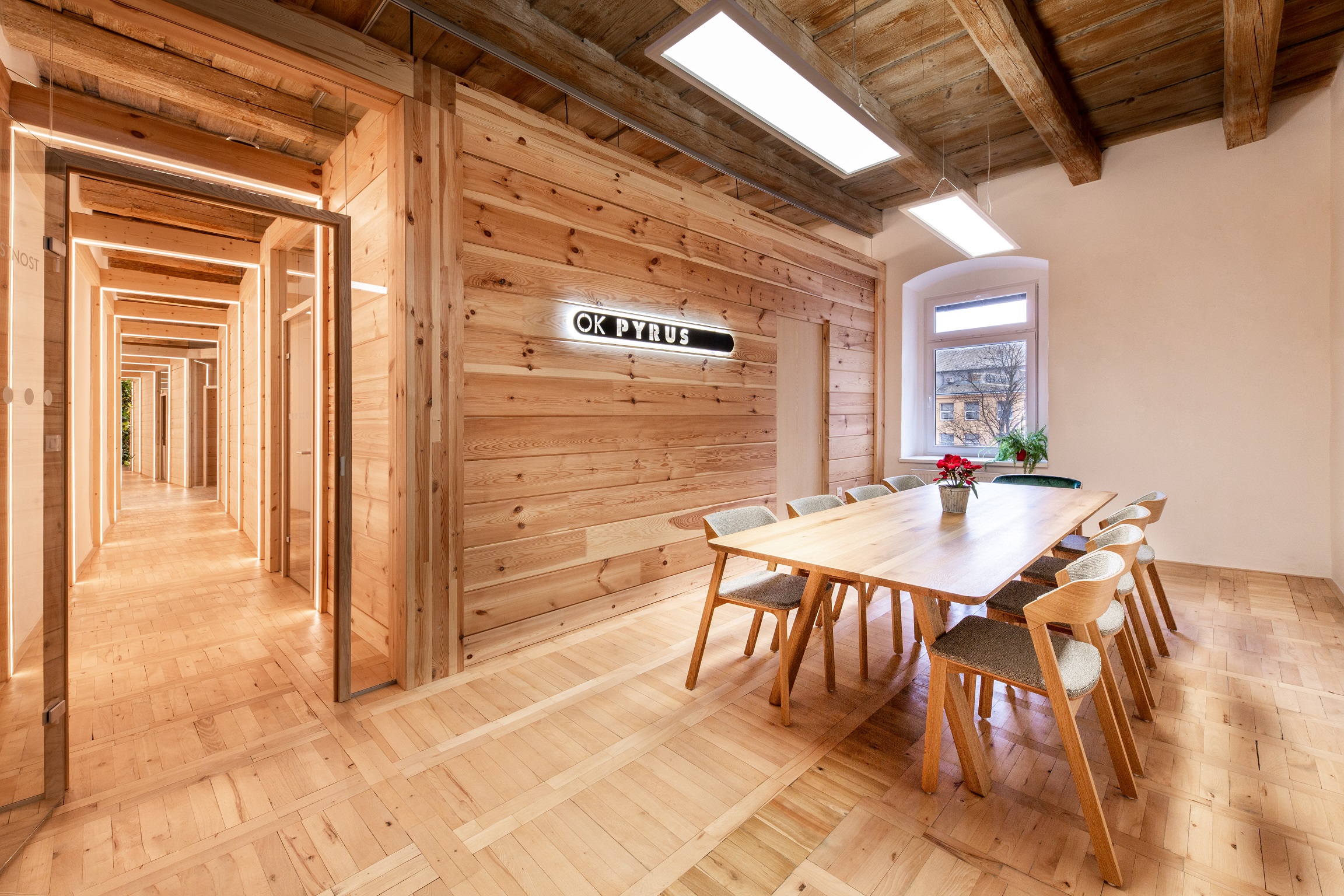
OK Pyrus – former Art Protis workshop

Toilets
Photography allowed
Parking available
Dogs allowed
Today, Art Protis is a somewhat overlooked textile technique. It was invented in 1964 at the Knitting Research Institute in Brno by its founding fathers, František Pohl, Václav Škála, and Jiří Haluza, and experienced its peak in the 1970s and 1980s.
The Art Protis studio, located from 1967 in the Vlněna textile factory (Plant 2) on Tkalcovská street in Brno, was the only place where these tapestries could be produced. This non-woven textile technique was designed to replace the expensive and time-consuming production of wall carpets and tapestries. The artist would create a design, which was then transferred onto a base fabric by layering coloured wool fleece to form the desired pattern. Once completed, the prepared piece was placed in a Maliwatt machine, which attached the fleece to the fabric using a fine overlock stitch with “invisible” nylon thread. Through this process a non-woven wall carpet was created.
Art Protis was used not only for wall carpets but also for theatre curtains, furniture upholstery, and decorative wall coverings. Art Protis was a tremendous success, representing Czechoslovakia at World Expositions in Osaka and Montreal, where it was awarded a gold medal. Since the patent for this invention was never sold, artists who wished to work with Art Protis had to travel to Brno and bring their designs to life at the studio. Unfortunately, however, after the collapse of Vlněna in 1997 the Art Protis studio was inevitably dissolved as well.
The studio employed assistants, often artists themselves, who helped with the creation process. Artists would come up with and sketch the basic designs, while the assistants ensured the designs were feasible and visually appealing. All of this took place in a rather shabby building just off Cejl street, where a supermarket now stands. However, the atmosphere inside the workshop was entirely different, brimming with vibrant colours and artistic creativity.
For loading the interactive map, please click on the map area.
For loading the interactive map, please click on the map area.